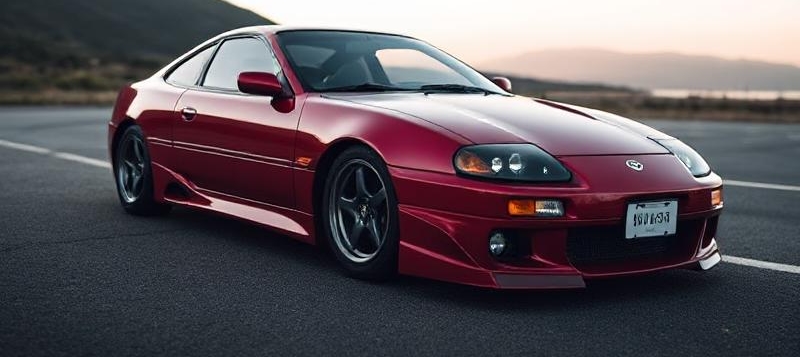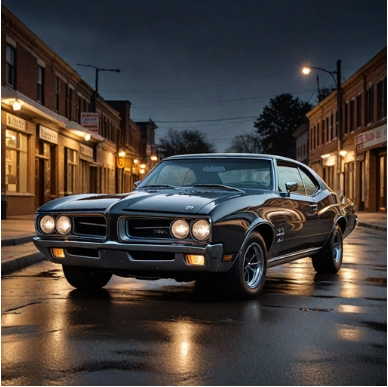The Evolution of the Toyota Celica: A Journey Through Time
The Toyota Celica is not just a car; it is a significant chapter in the annals of automotive history. Launched in 1970, the Celica was envisioned to fill the gap between Toyota’s compact models and larger performance vehicles. Over a span of four decades and several iterations, the Celica would come to represent agility, performance, and a distinctively sporty character that resonated with enthusiasts worldwide. This article chronicles the evolution of the Toyota Celica, detailing its various models, trims, and the changes that marked its development through the years.
First Generation (1970-1977)
Production Years: 1970-1977
Model Codes: ST, GT, GTS
The first-generation Toyota Celica made its debut in 1970 as a compact coupe, characterized by its sporty design and rear-wheel drive layout. This generation featured a four-cylinder engine with a displacement of 1.6 liters, delivering a spirited 110 horsepower.
The Celica was offered in various trim levels:
- ST: The base model featuring basic amenities.
- GT: This trim boasted a more powerful engine and sportier features.
- GTS: The performance-focused variant with enhancements in both power and handling.
In 1974, Toyota expanded the engine options, introducing a 2.0-liter model, which further boosted its popularity. The car’s influence extended into motorsport, leading to increased recognition and respect on the racing circuit.
Second Generation (1978-1981)
Production Years: 1978-1981
Model Codes: RA40, RA45
With the second-generation Celica, launched in 1978, the car underwent a significant redesign and grew in both size and weight. It retained the classic styling but introduced more contemporary aesthetics. Engine options varied from a 1.6-liter to a more robust 2.2-liter inline-four, providing better performance.
Trim levels included:
- ST: Featured basic comfort and convenience.
- GT: Offered better performance and sports styling.
- GT-S: The top-of-the-line model, designed for performance aficionados.
Notably, the second generation also saw the introduction of a liftback version, catering to those who sought more practicality without sacrificing sportiness.
.

.
Third Generation (1982-1986)
Production Years: 1982-1986
Model Codes: RA60, RA65
Launched in 1982, the third generation showcased a more refined design and improved aerodynamics, which contributed to better performance and fuel economy. The engine options expanded with a focus on turbocharging, particularly with the introduction of the 2.0-liter inline-four turbo in 1984, which significantly elevated the Celica’s performance potential.
Key trims were:
- ST: A well-rounded base model.
- GT: Included a powerful 2.0-liter engine.
- GT-S: Featured additional performance upgrades and sport-tuned suspension.
- GT-Four: This all-wheel-drive variant was a revelation, especially in rally racing.
The GT-Four variant helped cement the Celica’s reputation in motorsport, particularly in the World Rally Championship.
Fourth Generation (1986-1989)
Production Years: 1986-1989
Model Codes: ST165
The fourth generation of the Celica marked a significant leap forward in technology and performance. Launched in 1986, it came with a more aggressive styling and a range of engines, including a highly-prized turbocharged 2.0-liter engine. This generation also introduced the all-wheel-drive system across various trims.
Trim levels highlighted included:
- ST: The practical base model.
- GT: Maintained a sporty edge with improved performance.
- GT-S: This had additional features aimed at driving enthusiasts.
- GT-Four: The performance powerhouse, designed for rally dominance.
The GT-Four would become legendary, winning multiple titles in global rallying and establishing the Celica as a motorsport icon.
Fifth Generation (1990-1993)
Production Years: 1990-1993
Model Codes: ST185
The fifth generation, introduced in 1990, maintained much of what made previous models successful while embracing modern design and technological advancements. The revised body style was sleeker and more aerodynamic. Engine choices still included the turbocharged version, retaining significant performance levels.
The trims were:
- ST: Standard efficiency and performance.
- GT: Targeted at sportier dynamics.
- GT-S: Focused on luxury and performance.
- GT-Four: Continued as the high-performance rally variant.
By this point, the Celica was not only a favorite among everyday drivers but also a revered name in motorsport, especially with the GT-Four.
Sixth Generation (1994-1999)
Production Years: 1994-1999
Model Codes: ST202
The sixth generation of the Celica saw a departure from the aggressive styling of previous models, pivoting towards a more curvy and aerodynamic design. This generation was particularly popular among younger consumers and enthusiasts. It offered a broad array of engines, including powerful inline-four options and a V6 in certain markets.
Trim levels for this generation included:
- ST: The entry-level model with decent performance.
- GT: Introduced more features and better performance metrics.
- GT-S: Aimed at sportiness and comfort together.
- GT-Four: A legendary rally icon that continued to embrace motorsport.
The styling and performance made the Celica a modern classic, and it cultivated a dedicated following throughout its run.
Seventh Generation (1999-2006)
Production Years: 1999-2006
Model Codes: ST205
The seventh generation, launched in 1999, featured more of a hatchback design, targeting a broader audience segment. The engine options strictly comprised four-cylinder engines, but performance remained a key selling point.
Trim levels included:
- GT: Standard model with performance aesthetics.
- GT-S: Featured sport-tuned suspension and various enhancements.
- GT-Four: The rally-inspired version still commanding attention.
The Celica continued to offer spirited performance and a youthful appeal, keeping its relevance in a changing market.
Conclusion: The Legacy of the Toyota Celica
The final factory-produced Toyota Celica rolled off the line in 2006, concluding a remarkable run of 36 years. The Celica left an indelible mark on the automotive world, celebrated for its sporty characteristics, performance-driven models, and the spirit of competition it represented.
As enthusiasts remember the Celica, its legacy continues to inspire future generations of sports cars, melding innovation with undeniable charm. The Celica remains a beloved icon synonymous with adventure on the road and a symbol of Toyota’s commitment to performance and passion.







